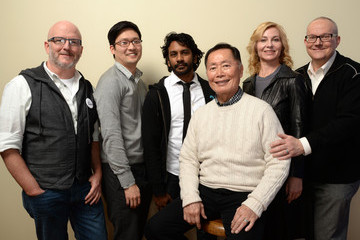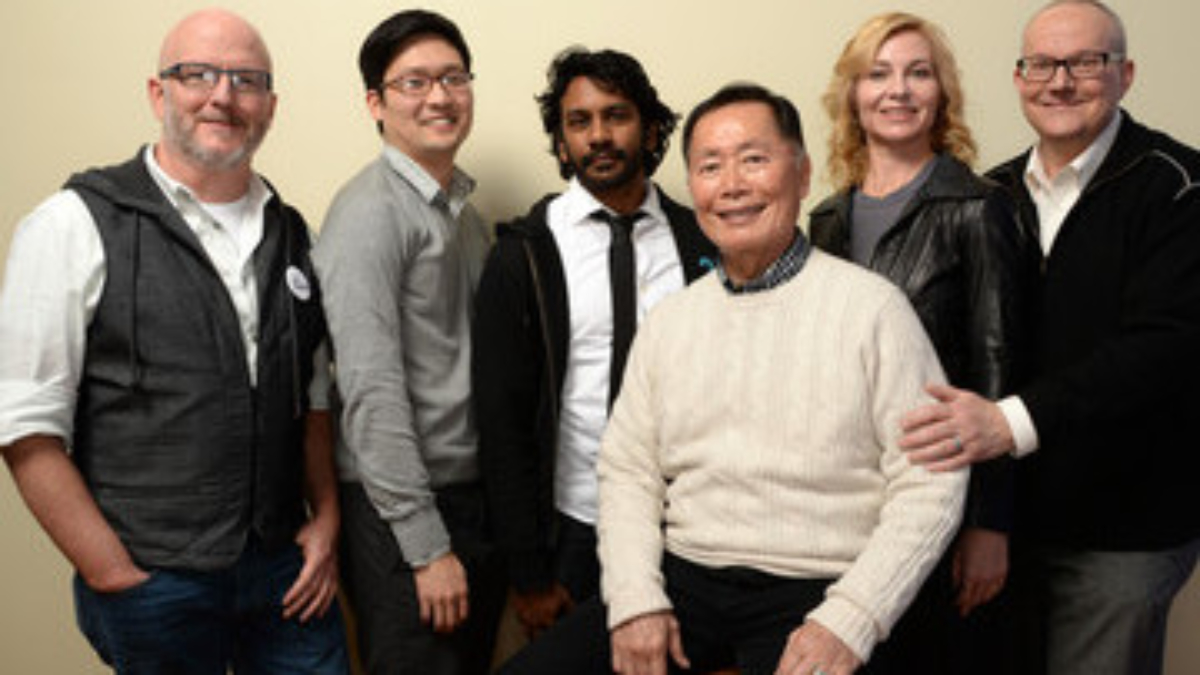In anticipation of the June 15 screening, CineVue interviewed Director Jennifer Kroot on how the process of filmmaking allowed her to explore the accomplishments of George Takei’s life.

CineVue: As a Star Trek fan, what was your initial reaction to George’s coming out in 2005? When and how did you approach George with the proposal to make a documentary?
Jennifer Kroot: I was thrilled when George came out in 2005. I had never speculated on what his sexuality was, but I knew that he was 68 and assumed that it must have been very freeing for him to finally be able to discuss this publicly. I was impressed with his bravery (I mean he didn’t need to come out). I knew that his ability to be public about his homosexuality would be helpful to the public at large. It would not only be affirming to LGBT people, but almost more importantly, I knew that because Star Trek has such a huge fan base it would be beneficial for people who are homophobic (or just uneducated about homosexuality) to know that a beloved cast member of the original series is openly gay. As a Star Trek fan, I believe in Infinite Diversity in Infinite Combinations (IDIC) and I admired George for being open about this invisible element of “diversity” that he decided to make public. This could have ended his acting career, but instead it revitalized it.
I approached George and Brad in late 2009 and proposed the documentary. By then, they had already gotten married and George had become quite a spokesperson for LGBT civil rights in the media. I didn’t actually know them, so I wrote as compelling a letter as I could to their agent. The agent liked my previous documentary, “It Came From Kuchar”, and set up a meeting with the Takeis. It took a while to get to know each other and we started filming in mid 2010.
CV: What is the most challenging/rewarding part of combing through his experiences as a Japanese American who was interned during WWII, a highly recognized Japanese American actor, a gay actor, and a gay public figure? Was it intentional to find parallels and commonalities between his different causes? And all the threads are neatly interwoven. It really echos the progressive notion of “infinite combinations” of Star Trek.
JK: It was intentional to express and explore the parallels of the various obstacles that George has faced and faces. It was a challenge to find the best way to show the parallels without being preachy. We tried to be thoughtful by showing the different obstacles along with clips from George’s civil rights speeches. The structure of the film is complex (to cover all of the many facets of George’s life). We chose a structure that isn’t always linear, so that we can show how George (and Brad) handle the obstacles in the present, and reflect back on how these struggles have continued at many points in George’s life. George is always very aware of his past in the work that he does in the present, so it was important to show how the past haunts or informs him constantly. It’s been incredibly rewarding to see audiences react with tears and laughter to this film.
CV: The relationship between George and Brad turns out to be one of the pillars of the film. Was it in the original plan that you wanted to place the relationship of George and Brad in the foreground (like those shots of them in the car)? What do you find fascinating about their relationship?
JK: I didn’t know George and Brad when I approached them about making the film, so I was not aware of their “relationship dynamics”. As I got to know them it became clear to me that they have such a comfortable way of being open with their dynamics that I knew it had to be in the film. Anyone (straight or gay) who has been in a long term relationship will recognize these dynamics. We’ve called it a “functional dysfunctional” relationship, which is probably a category that most successful relationships fit into.
I think it’s important to show their relationship with it’s everyday ups and downs to people who may not have as much experience or comfort with same sex couples, so they can see how similar this same sex couple is to a straight couple. I really appreciate the Takeis’ openness with their dynamics. I think this may be the only romantic-comedy-documentary ever! Besides that, Brad is a star!
CV: The other pillar is the memory of the internment experience and George’s memories of his father, which perpetuals his creative passion that leads him to perform in Allegiance. Do you think Allegiance is a work closer-to-heart for him than his better known role as Captain Sulu?
JK: George refers to Allegiance as his legacy project. It’s very close to his heart. It’s hard for me to compare if it’s closer to his heart than Star Trek. It’s just such a different thing. Without Star Trek George may not have had the opportunity to create Allegiance. Because of Star Trek, George can leverage his iconic fame toward causes that are deeply important to him. I know that George is incredibly proud of his association with Star Trek. It was ahead of it’s time in dealing with political themes like civil rights.
CV: What was the most surprising or difficult part of filming George? He can be as sharp and un-reconciling as he is witty. Did you get George to talk about things that he had never talked about in his public lectures?
JK: George is always very present with everyone, whether it’s an interviewer or a fan on the street or at home with Brad. George really listens to people. Most people don’t do that.
One thing that George talked about that he doesn’t like to discuss is that he did two Jerry Lewis films earlier in his career and he played Asian stereotypes. He says that his agent talked him into it, but he personally regrets it. It’s in the film and he told me that he doesn’t particularly like seeing it, but it’s true, so he knows it’s important to his story. I admire him for being able to admit that he made a bad choice about taking these roles. I don’t think that’s easy.
CV: What is really great about George is that he performs out the absurdity in the phobias and to normalize what is feared about. The Star Trek series pioneers in carrying progressive messages and casting multi-racial actors. And your film also touches upon the fact that the slash culture becomes prevalent. How do you see the activism through mass/social media today? George uses Facebook now – does he feel it is more empowering than before?
JK: George has been a pioneer on Star Trek, The Howard Stern Show and now Facebook and social media. He isn’t afraid to be outrageous or humorous with his activism. I think that George has always felt empowered(it’s just his personality), but I do think that he finds his huge reach on Facebook to be rewarding. He has about seven million fans and has been called the “King of Facebook” and the “most important person on Facebook” by Wired magazine. George is in the unique position of being a beloved character of the iconic original Star Trek series turned activist, so it makes sense that people would be interested in his posts. He is known on Facebook for honesty, smart humor and progressive politics. Apparently this is the perfect combination! I think George is as surprised as anyone about the popularity he’s achieved, and he’s leveraging that popularity to discuss important issues.
CV: Are you excited about the film being shown in New York?
JK: We are all really thrilled and honored that To Be Takei will screen in New York at the Human Rights Watch Film Festival! We believe this is the perfect New York premiere. This festival is really in line with the values of the film. George and Brad live part time in New York, so I know this is meaningful to them. Since New York City is so diverse, I think audiences will appreciate the broad discussion of civil rights in the film. There may be less of an education about the Japanese American Internment in NY (I’m speculating here) since the internment took place on the west coast, so I imagine that New Yorkers will be intrigued to learn about this history, especially with New York’s history of immigration.
Main image: Scene from To Be Takei. Photo credit: Image courtesy of Film Society of Lincoln Center.
Second image: Photo of George Takei, Jennifer M. Kroot, Mayuran Tiruchelvam, Bill Weber,Brad Takei, Gerry Kim. Photo credit: Image courtesy of Larry Busacca/Getty Images North America.

